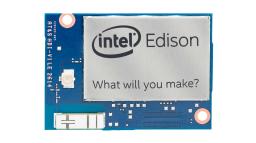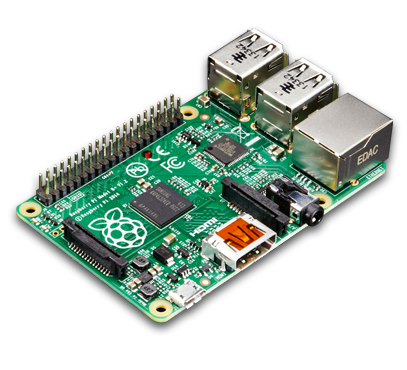The FabMo engine is host software that connects to a G2 motion control platform and manages it, exposing a web interface. The engine serves the following major functions:
- Streaming of G-Code files to G2
- Monitoring of G2 motion state and cycle progress
- Storage and management of files (that currently cannot be stored on G2)
- Interpretation of the OpenSBP (ShopBot) language
- Hosting of the "FabMo Dashboard" a web frontend to the FabMo Engine that provides an app hosting environment
- Install nodejs - The officially supported version is v16.14.0 - Newer versions may not work at this time
- Check out the source code https://github.com/FabMo/FabMo-Engine
- From inside the source directory, install all of the engine dependencies with
npm install - Create the engine data directory at
/opt/fabmoorC:\opt\fabmoif you're on windows. Set the permissions on this directory so that the user running the engine can read/write to it. - Start the engine with
npm run debugfor development mode ornpm startfor production mode. - On Windows it is unlikely that the default COM port settings are satisfactory. After running the engine once, edit
C:\fabmo\config\engine.jsonand set the two COM ports for your platform with the appropriate values for your system.
** Note that you should not need to run the engine as a privileged user. If you have to run your engine using sudo check your node installation and the permissions settings for the /opt/fabmo directory **
When the engine starts, it will connect to G2 and setup an http server to accept connections on port 80. Once the engine is running you can visit https://localhost/ to use the fabmo dashboard.
The engine is run from source, and only needs to be checked out and stored in a local directory. Run npm install from the source directory to install the needed dependencies and perform the webpack step that builds the frontend.
To install the engine in the "standard" location on the Intel Edison, perform the following steps.
- Checkout the source into
/fabmowithgit clone https://github.com/FabMo/FabMo-Engine /fabmo - Install dependencies using npm:
cd /fabmo; npm install - Install the systemd service file
cp /fabmo/files/fabmo.service /etc/systemd/system - Set the appropriate permissions on the service file
chmod 0775 /etc/systemd/system/fabmo.service - Inform systemd of the unit file change
systemctl daemon-reload - Enable the new service
systemctl enable fabmo - Start the new service immediately
systemctl start fabmo - After the engine has had time to start, check its status:
systemctl status fabmo
To install the engine in the "standard" location on the Raspberry Pi 3, perform the following steps.
- Checkout the source into
/fabmowithgit clone https://github.com/FabMo/FabMo-Engine /fabmo - Checkout the appropriate branch of the source tree. The
releasebranch is the most recent stable release. (git checkout release) - Install dependencies using npm:
cd /fabmo; npm install - Run the engine using the instructions below
To install the engine in the standard location on a Mac, follow the steps below. This method is used by the FabMo team for development in the OSX environment.
- Install Node.js 16.14 with homebrew:
brew install node@16 - Install npm:
brew install npm - Create the fabmo directory:
mkdir -p /fabmo - Create the fabmo data directory:
mkdir -p /opt/fabmo - Clone the engine source
/fabmo/enginewithgit clone https://github.com/FabMo/FabMo-Engine /fabmo/engine - Checkout the appropriate branch of the source tree. The
releasebranch is the most recent stable release. (git checkout releasefrom the/fabmo/enginedirectory) - Install dependencies using npm:
cd /fabmo/engine; npm install - Run the engine using the instructions below. Make sure that the G2 motion control board is connected the first time you run the engine. The engine auto-detects the USB port and saves this setting on first run, and if the motion controller is absent, it won't be properly detected. If you need to change ports later on, the port settings are located in
/opt/fabmo/config/engine.json
If you have Docker installed locally, you can run the FabMo interface inside a Docker container rather than running it locally.
- Check out the source code on your workstation
1.
npm run docker:devwill build your docker container, install dependencies, and run thenpm devtarget in the docker container. The first time you run it, it may take a bit of time to build the container.
If everything goes right, you'll find the fabmo dashboard running on https://localhost:8411
If you need to log into the docker machine, you can use the command npm run docker:bash
For debugging the engine, you can run it directly from the command prompt with npm start or node server.js - make sure you have built the dashboard with npm run webpack - alternatively, you can run npm run dev which will run the system in debug mode (which adds some logging and more aggressively reloads apps) as well as run the webpack first. If you want to run in debug mode, but skip the webpack step, run npm run debug
A number of grunt tasks have been set up to facilitate engine development. To see them, run grunt with no arguments in the source directory, and a list will be produced with explanations.
Source code documentation is generated with groc, and API documentation for the engine's REST API is generated with apidoc. To generate documentation: grunt doc - to generate documentation and push it to Github Pages, linked at the top of this readme: grunt doc-dist
The entry point for the application is server.js but for an overview of how the engine starts, begin with engine.js - particularly the start method. This is the function that initializes the system and starts all the processes (including the webserver) that make the application work.


